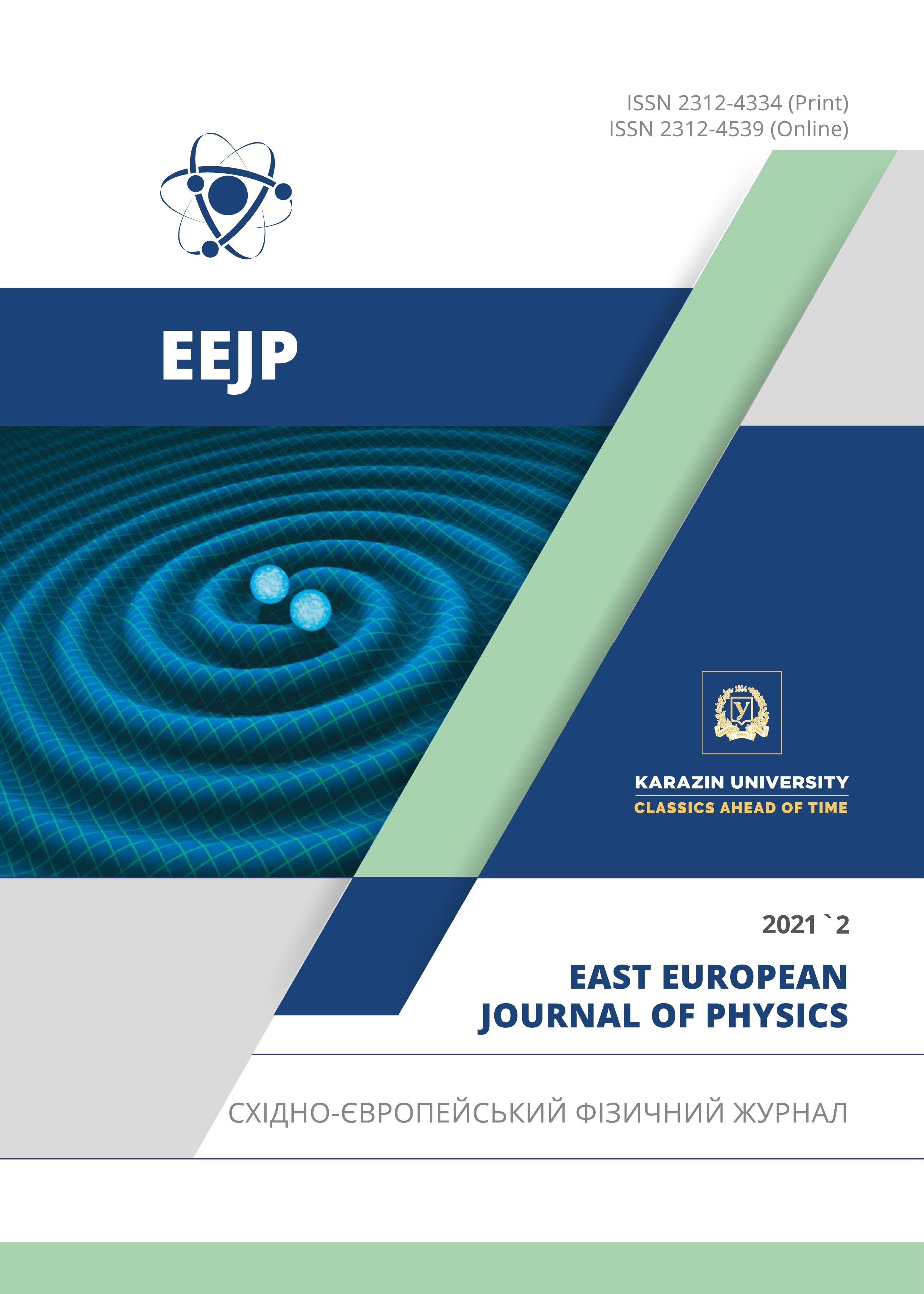Energy Activation Spectrum of Low-Temperature Acoustic Relaxation in High-Purity Iron Single Crystal. Solution of the Inverse Problem of Mechanical Spectroscopy by the Tikhonov Regularization Method
Abstract
When studying the temperature dependences of the acoustic absorption and the modulus of elasticity, absorption peaks are often observed, which correspond to the characteristic step on the temperature dependence of the modulus of elasticity. Such features are called relaxation resonances. It is believed that the occurrence of such relaxation resonances is due to the presence in the structure of the material of elementary microscopic relaxors that interact with the studied vibrational mode of mechanical vibrations of the sample. In a sufficiently perfect material, such a process is characterized by a relaxation time τ, and in a real defective material by a relaxation time spectrum P(τ). Most often such relaxation processes have a thermally activated character and the relaxation time τ(T) is determined by the Arrhenius ratio τ(T)=τ0exp(U0/kT), and the characteristics of the process will be U0 - activation energy, τ0 - period of attempts, Δ0 - characteristic elementary contribution of a single relaxator to the dynamic response of the material and their spectra. In the low temperatures region the statistical distribution of parameters τ0 and Δ0 can be neglected with exponential accuracy, and the relaxation contribution to the temperature dependences of absorption and the dynamic elasticity modulus of the material will be determined only by the activation energy spectrum P(U) of microscopic relaxors. The main task of mechanical spectroscopy in the analysis of such relaxation resonances is to determine U0, τ0, Δ0 and P(U). It is shown, that the problem of recovering of spectral function P(U) of acoustic relaxation of a real crystal can be reduced to the solving of the Fredholm integral equation of the first kind with an approximately known right part and concerns to a class of ill-posed problems. The method based on Tikhonov regularizing algorithm for recovering P(U) from experimental temperature dependences of absorption or elasticity module is offered. It is established, that acoustic relaxation in high-purity iron single crystal in the temperature range 5-100 K is characterized by two-modes spectral function P(U) with maxima at 0.037 eV and 0.015 eV, which correspond to the a-peak and its a' satellite.
Downloads
References
A.S. Nowick, and B.S. Berry, Anelastic relaxation in crystalline solids, (Academic Press, New York and London, 1972).
V.D. Natsik, and Yu.A. Semerenko, Low Temp. Phys. 42, 138 (2016), https://doi.org/10.1063/1.4942907.
V.D. Natsik, P.P. Pal-Val, L.N. Pal-Val, and Y.A. Semerenko, Low Temperature Physics, 26, 522 (2000); https://doi.org/10.1063/1.1306411.
V.D. Natsik, and Yu.A. Semerenko, Low Temp. Phys. 45, 551 (2019), https://doi.org/10.1063/1.5097366.
H.F. Guliyev, and V.N. Nasibzadeh, Vestnik Tomskogo gosudarstvennogo universiteta. Matematica i mekhanika [Tomsk State University Journal of Mathematics and Mechanics], 54, 5 (2018), https://doi.org/10.17223/19988621/54/1.
O.V. Mozgovy, Технологические системы [Technological Systems Journal], 3(68), 50 (2014), http://www.technological-systems.com.ua/images/journal/2014/files/ts68.pdf. (in Russian)
A.N. Tikhonov, and V.Ya. Arsenin, Solutions of Ill-Posed Problems, (Halsted Press, 1977).
M. Kakegawa, and K. Sakamoto, Jpn. J. Appl. Phys. 9, 1057 (1970), https://doi.org/10.1143/JJAP.9.1057.
K. Takita, and K. Sakamoto, Scripta Metall. 4, 403 (1970), https://doi.org/10.1016/0036-9748(70)90110-9.
P.P. Pal-Val, V.D. Natsik, and S. Kadečková, Philosophical Magazine A, 56(3), 407 (1987), https://doi.org/10.1080/01418618708214396.
I.G. Ritchie, J.F. Dufresne, and P. Moser, Proc. ICIFUAS-6. ed. by R.R. Hasiguti, N. Mikoshiba, (University of Tokyo Press 1977), pp. 701.
L.B. Magalas, and P. Moser, J. de Phys. Colloques, 42, C5-97 (1981), https://doi.org/10.1051/jphyscol:1981514.
P. Astie, J.P. Peyrade, and P. Groh, Proc. ECIFUAS-3, ed. by C.C. Smith, (Pergamon Press, 1980), pp. 49.
P. Astie, J.P. Peyrade, and P. Groh, Scripta Metall. 14, 611 (1980), https://doi.org/10.1016/0036-9748(80)90008-3.
P. Astie, J.P. Peyrade, and P. Groh, J. de Phys. 42, C5-91 (1981), http://dx.doi.org/10.1051/jphyscol:1981513.
P. Astie, Proc. of Summer School on Internal Friction in Solids, ed. by S. Gorczyca, L.B. Magalas, (Cracow, Poland, 1984), pp. 43.
L.B. Magalas, Thesis, Academy of Mining and Metallurgy, Cracov, 1982.
L.B. Magalas, Proc. of Summer School on Internal Friction in Solids, ed. by S. Gorczyca, L.B. Magalas, (Cracow, Poland, 1984), pp. 89.
Yu.A. Semerenko, Proc. 21th Int. Conf. "Relaxation Phenomena in Solids", (Voronezh, Russia, 2004), ISBN 5-9273-0617-9, pp. 234.
Authors who publish with this journal agree to the following terms:
- Authors retain copyright and grant the journal right of first publication with the work simultaneously licensed under a Creative Commons Attribution License that allows others to share the work with an acknowledgment of the work's authorship and initial publication in this journal.
- Authors are able to enter into separate, additional contractual arrangements for the non-exclusive distribution of the journal's published version of the work (e.g., post it to an institutional repository or publish it in a book), with an acknowledgment of its initial publication in this journal.
- Authors are permitted and encouraged to post their work online (e.g., in institutional repositories or on their website) prior to and during the submission process, as it can lead to productive exchanges, as well as earlier and greater citation of published work (See The Effect of Open Access).








